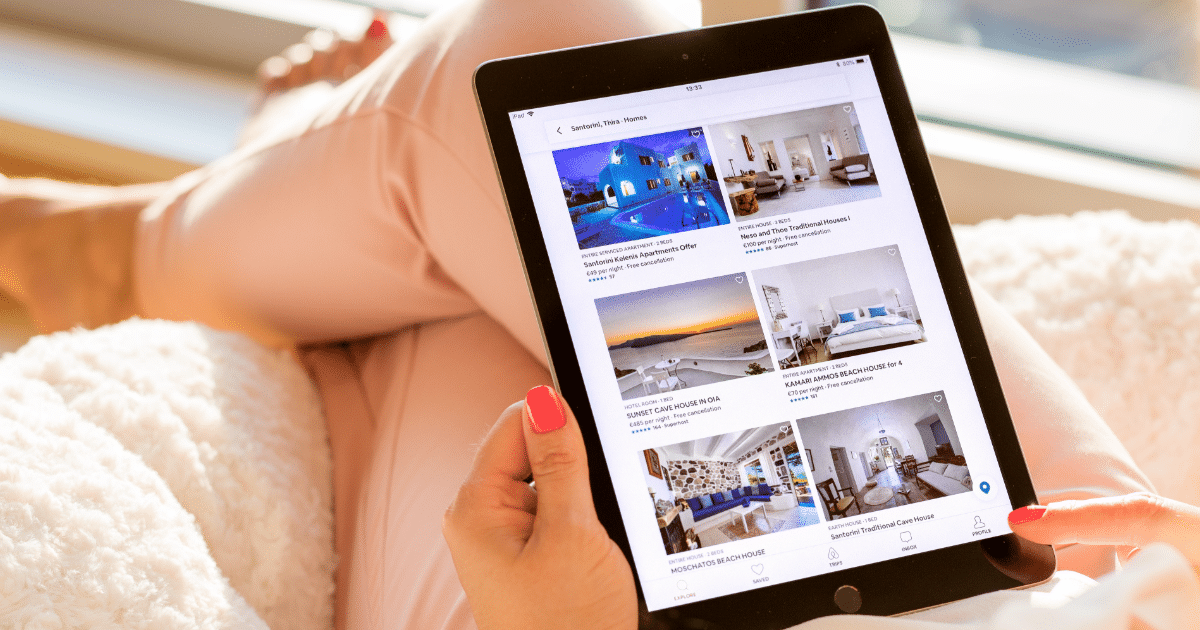Get Seen, Get Results: The Best Types of Display Advertising for Your Business Goals
August 8, 2025

B2B display advertising can either be a strategic growth engine or a black hole for budget.
If you’ve ever launched a campaign that looked good on paper but delivered disappointing results, you’re not alone. The truth is that most marketers aren’t short on tools; they’re overwhelmed by choices. And without clarity on which display formats work best for specific business goals, it’s easy to waste time and ad dollars.
This guide cuts through the noise. Whether you’re driving awareness, retargeting high-value accounts, or filling pipeline with qualified leads, we’ll show you which types of display advertising deliver and how to match them to the outcomes that matter most.
It’s time to simplify, execute smarter, and get seen by the buyers that count.
Types of Display Advertising That Get You Noticed
When marketers ask, “What are the different types of display advertising?” the answer includes more than just formats; it’s about function and fit. Each type serves a strategic purpose, and when used right, they can significantly boost campaign performance across the funnel.
Choosing the right type can be the difference between getting scrolled past or getting results. Here’s how the most common formats align with specific goals:
- Banner Ads: These are the go-to for brand visibility. Best for top-of-funnel awareness, banners work well on high-traffic sites and retargeting campaigns. Simple, scalable, and cost-effective but they require fresh creative to fight off banner fatigue.
- Native Ads: Designed to match the look and feel of the surrounding content, native ads are perfect for mid-funnel engagement. Think content syndication, thought leadership, and ABM nurture where context matters and trust is key.
- Video Ads: Whether pre-roll, mid-roll, or social placements, video ads bring storytelling power to the mix. They shine when you need to humanize a solution or highlight product differentiators in a memorable way.
- Interstitial Ads: These full-screen takeovers are great for high-impact moments, like during transitions or app usage. They’re best used sparingly, often for time-sensitive promotions or product launches that need to break through the noise.
- Rich Media Ads: Interactive, animated, or dynamic, rich media goes beyond static visuals to invite clicks and drive engagement. Perfect for showcasing product features or re-engaging decision-makers already in your pipeline.
Each of these types has its strengths, but the right fit depends on your goal. Are you trying to attract, educate, or convert? Once you’re clear on that, choosing the right format gets a lot easier.
But knowing the format is only half the equation. To really make display work, you need the right strategy behind the placement.
Proven Display Advertising Techniques for Smarter B2B Targeting
Display advertising in digital marketing is no longer about buying space and hoping for clicks. It’s about precision, timing, and intent. To turn impressions into influence, B2B marketers need to go beyond formats and focus on how and when those ads reach the right audience.
Here are the top techniques powering smarter execution:
- Retargeting: This is your second (and often best) chance at conversion. Retargeting works by re-engaging users who’ve shown prior interest, whether they visited your pricing page, downloaded content, or engaged with your brand on social media. It’s especially powerful in long B2B buying cycles, keeping your solution top-of-mind without being intrusive.
- Contextual Targeting: Rather than relying on user behavior, contextual targeting places your ad next to content that aligns with your offering. For example, placing an ABM solution ad on an article about sales pipeline acceleration. It’s a great strategy for thought leadership or awareness campaigns, especially when privacy regulations limit behavioral tracking.
- Behavioral Targeting: This tactic leverages user actions, like pages visited, whitepapers downloaded, or competitor site behavior, to deliver highly personalized ads. It’s particularly effective for mid-funnel campaigns where timing and relevance can accelerate decision-making.
- Programmatic Advertising: Using real-time bidding (RTB) and AI, programmatic buys automate ad placement across vast publisher networks. It’s scalable, efficient, and ideal for campaigns requiring reach and speed. That said, it requires clear parameters, audience segments, exclusions, and frequency caps, to avoid wasted spend or irrelevant placements.
- Direct Buys: Best for premium placements and brand-safe environments, direct buys give you more control over where your ads appear. For example, locking in a leaderboard banner on a respected industry site during product launch week. Though more manual, this approach can boost trust and visibility among niche B2B audiences.
The best campaigns often use a blend of these techniques, retargeting for persistence, contextual for relevance, programmatic for scale, and direct buys for precision. The real power comes from knowing when to deploy which tactic, based on your objective, budget, and buyer behavior.
Reaching the right audience is half the battle. The other half is what you show them.
RELATED: Boosting Social Media Subscribers with Programmatic Display
The Anatomy of a High-Performing Display Ad
Every high-performing display ad is built on a few essential elements, and if you’re wondering what the 4 parts of a display ad are, this is where strategy meets execution.
- Headline: Your headline has milliseconds to grab attention. Focus on clarity over cleverness. Ask a question, state a benefit, or highlight a pain point your target audience actually cares about. Make them want to pause, even just for a beat.
- Visual/Creative: A good creative reinforces your message. A great one stops the scroll. Whether it’s a product shot, animation, or simple illustration, it should support the CTA and stay on-brand. Don’t forget mobile optimization where many B2B buyers still browse.
- Call to Action (CTA): Generic CTAs like “Learn More” won’t cut it. Make your ask relevant and specific to the user’s context. “Get the Report,” “Book a Demo,” or “Compare Tools” creates clear next steps that move them forward.
- Branding: Subtle but essential. A clearly visible logo builds credibility and connects the ad to the broader campaign. Especially for retargeting, visual consistency reinforces recognition and trust.
Even the best targeting won’t save an ad with unclear or uninspired creative. These elements must work in harmony, leading the viewer naturally from interest to action.
Getting the components right is what separates ignored ads from those that convert.
Real-World Display Advertising Examples That Convert
Curious what a great display ad looks like in action?
Here are a few display advertising examples that show how different formats work to drive results.
- Content Syndication Ad (Native):
A cybersecurity company promotes a new industry report by syndicating content across a network of business tech sites. The native format ensures it blends into editorial content, building credibility. The goal? Mid-funnel engagement that positions the brand as a trusted advisor while capturing qualified leads for nurturing. - Retargeted Banner (Rich Media):
A visitor browses your pricing page but doesn’t act. Two days later, they see a dynamic banner featuring a case study relevant to their industry, plus a “Book a Demo” CTA. This approach keeps the conversation going without being intrusive, ideal for re-engaging late-stage prospects. - Video Ad (Programmatic):
A SaaS provider runs 15-second videos showcasing key product differentiators, short enough for engagement, sharp enough to inform. These are programmatically distributed across business news and LinkedIn feeds targeting operations leaders. Perfect for brand recall and building early-stage interest.
Each of these display advertising examples highlights a common thread: purpose-built creative, smart targeting, and contextual delivery. That’s the formula for turning impressions into pipeline.
Weighing the Benefits and Disadvantages of Display Advertising
Let’s be real. No marketing channel is perfect. But when used with intention, display advertising offers a powerful combination of reach, precision, and performance. Understanding both its strengths and limitations helps you optimize spend, minimize waste, and stay aligned with business goals.
Benefits of Display Advertising
- Widespread Reach: Display ads give you access to millions of sites and platforms, making it easy to build brand awareness at scale, especially helpful for top-of-funnel or product launch initiatives.
- Targeting Precision: With tactics like behavioral and contextual targeting, you can deliver highly relevant messages to the right audiences across channels. According to Gartner’s 2025 CMO Spend Survey, display now accounts for 12.5% of total digital marketing spend—surpassing social—and grew 17% year-over-year.
- Retargeting Power: Display excels at bringing back visitors who didn’t convert, nudging them toward the next step with minimal effort.
- Scalable Spend: Whether you’re working with limited budgets or enterprise-scale dollars, display campaigns can flex to match your resources.
- Performance Insights: Strong reporting tools make it easy to test creatives, refine targeting, and prove ROI, especially when integrated with your CRM and MAP.
Challenges of Display Advertising
- Creative Burnout: Audiences tune out static or repetitive ads quickly. Keeping creative fresh is essential to sustain engagement.
- Lower CTRs: Compared to search or email, display ads often have lower click-through rates, especially if misaligned with user intent.
- Banner Blindness: Experienced users have learned to ignore display placements, particularly on cluttered pages.
- Privacy Constraints: With the phase-out of third-party cookies, behavioral targeting is becoming more complex, requiring smarter data strategies.
The takeaway? The effectiveness of display advertising depends on how thoughtfully it’s used. It’s not about “should we use display?”, it’s about how, where, and to whom you’re serving it.
Your Next Best Move
The truth is, success with display advertising doesn’t come from doing more; it comes from doing what works. When you align ad formats and targeting tactics with clear business goals, display becomes more than just a visibility play, it becomes a growth engine.
At DemandScience, we help B2B marketers do exactly that. Whether you’re building awareness, accelerating pipeline, or scaling ABM programs, our data-driven solutions, targeting expertise, and transparent methodology put you in control of every impression and every outcome.
Ready to discover the format that fits your funnel?
Supercharge your B2B marketing strategies today.










